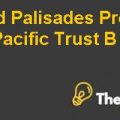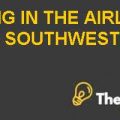Emirates Airline Connecting the unconnected Case Study Analysis
Critical Success Factors
The critical success factors of the organization mainly include its location and small local markets, which lead to the quick expansion of business to the international routes. Secondly, its distance of Dubai from the congested airspace of Europe is minimal aviation traffic, allowing the flights to connect at any time of the day. The relationship of Emirates with the government i.e., ICD played a role of sole shareholder, which assisted in fostering the cooperation between the airline, airport and the city. Similarly, the entrance of Emirates in the new markets was supported by the UAE government, through the negotiation of bilateral aviation agreements in the foreign regions.
Please conduct SWOT analysis to identify Emirate’s competitive advantages over the competitors.
SWOT Analysis
Strength
- The adoption of the flat organizational structure encouraged the organization’slowered costs, autonomy and flexibility.
- The organization had around 55,000 employees, which mainly included 17800 flight attendants and 3500 pilots.
- The passenger base of Emirates at global level hailed from around 148 countries, who spoke more than 50 languages.
- The airline received World Travel award from the travel industry for consecutive three years of providing best and first-class service to its passengers over past ten years.
- Emirates made heavy investments in the control and safety systems of the organization.
- The launch of newer planes brought an improvement in the passengers’ experiences and increased the efficiency of fuel consumption.
- The entrance of Emirates in underserved markets with fixed demand, provided the organization with a first-mover advantage.
Weakness
- The premium strategy adopted by Emirates was quite weak, which allowed the competitors, in particular its regional counterparts to copy it.
- The fare of Emirates are quite higher despite the lower labor cost in comparison to other players in the market.
- The organizational management is more focused towards diversification as compared tothe challenges posed by the industry and risks associated with the entrance in the new markets.
Opportunities
- For the long-term competitive advantage; the organization has the capability to lead the continuous development of new generations based on the usage of advanced technological approaches.
- Reduction in the fares would bring an improvement in the profit generation, because Emirates contributes to a small part of the global airline profit worldwide.
- Entrance in the underserved markets would allow the organization to gain its foothold in the market and capture the ensuing growth.
Threats
- Inability of the organization inbringing reduction in the cost might benefit the low-cost players in the market, resulting in its declined revenue generation.
- Lack of strategic focus to deal with the risks and challenges would negatively influence the position of the organization, in the international market.
Please argue which business strategy Emirates has chosen and analyze its five elements.
Elements of Business Strategy:
The strategic business approach of Emirates has been considered to be the cause of the rapid success, which is mainly based on the following elements:
Objective/Vision:
The organization is mainly focused on resolving the issues, such as: the pricing points, seat utilization, capacity and other related factors. Emirates considered itself different from a bus organization, and is more concerned regarding building the brand to take people to glamour and differentiate itselfby means of service i.e. its value proposition. The route business strategy of Emirates was based on capturing the underserved markets because of few options of flying and the presence of a large population. In order to increase service offerings, Emirates significantly leveraged its strategic geographic location.
Values:
The employees at the organization are highly valued and the organization promotes cultural diversity. Training sessions are set for the employees to ensure efficiency in their performance. The organizationconsiders its employees and values them by the provision of high-quality service, additional amenities, and the best first-class service and to provide direct long-haul flights. Leveraging strategic location significantly allowed Emirates to capitalize on new passenger demand flows at a global level i.e. not only in the European region but also in Africa and Asia.
Technology
Emirates makes continuous investment not only to bring improvement in the customer experience but also to bring a significant reduction in the emission of carbon dioxide. This was primarily doneby introducing efficiency in fuel consumption. Similarly, the reduction in fuel consumption was based on the selection of the shortest possible route. New aircraft’s technology allowed Emirates to initiate direct and non-stop services to New York and Sydney. An approach in association with the government of Africa allowed shortening of airline flight paths which shaved minutes of time flight per route.
Expansion
The entrance of Emirates in the new markets was its core strategic approach to improve its global presence because Dubai is a small market to operate in. The expansion in the underserved market allowed Emirates to gain a competitive advantage i.e. first-mover advantage. Emirates had the support of the government, which provided it with access to the restricted markets. Emirates saw growth opportunities in BRICS countries and increased its focus to invest in such markets. Thus, in terms of successful business expansion, four trends taken under consideration include: continuous expansion of airline service to the major served destinations, continuous addition of destinations to the secondary cities of the existing marketplace, new planes could expand to new American destinations, the operation of limited flights to and from the non-United Arab Emirates states through the use of fifth freedom rights.
Diversification
Emirates was more focused on diversification, i.e. the inclusion of employees with the ability to speak multiple languages. This was to make sure of animproved experience of the customers belonging to different cultures. The approach to diversity was not only limited to language skills but also the cultural backgrounds. For the maintenance of diverse front and to make sure that no single nationality was overrepresented, around 30 percent of the time of crewmember was devoted for home route and around 70 percent for other routes. Similarly, the executive leadership team mainly included people belonging to diverse cultural backgrounds.
Conclusion:
The launch of newer planes brought improvement in the passenger experience and increased the efficiency of fuel consumption. The relationship of Emirates with the government, i.e. ICD played the role of sole shareholder, which assisted in fostering the cooperation between the airline, airportand the city.Considering the fact that the design and capabilities of an aircraft are not cheap; there is a requirement to make heavy investment in order to bring an improvement in the integration of new technological approaches and development of additional amenities...................................
This is just a sample partical work. Please place the order on the website to get your own originally done case solution.










